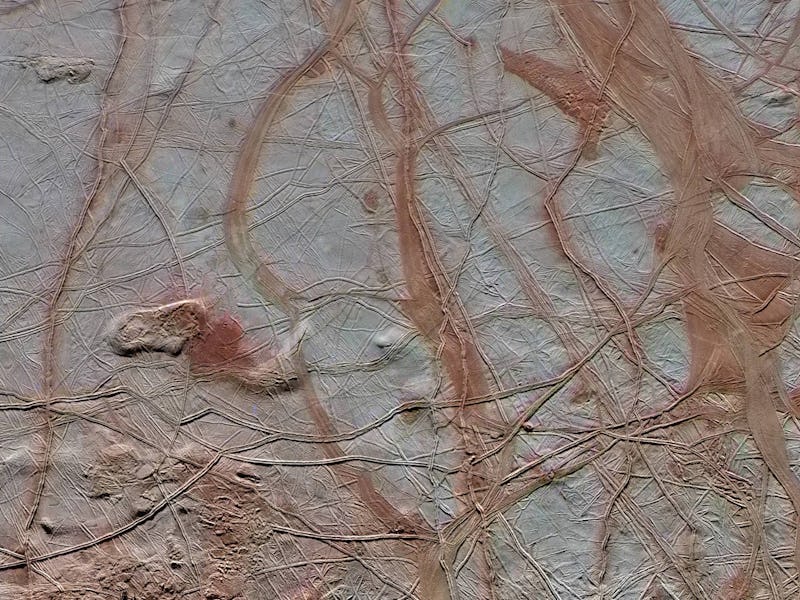Landing on Europa Could Be A Quicksand Death Trap
Not great.

Jupiter’s icy moon Europa has piqued astronomers’ interest for years, since the moon’s frozen ocean might harbor microscopic life. But landing a spacecraft on this moon might be more difficult than previously assumed, and potentially, impossible.
The color-enhanced picture of the moon’s surface, featured below, was taken by NASA’s Galileo spacecraft on August 2017. Europa appears to be covered in layers and layers of crosscutting ice — at least in this image. But a new study conducted by researchers at the Planetary Science Institute suggests the surface might be so porous that anything trying to land on the moon would simply sink.
This enhanced-color view from NASA's Galileo spacecraft shows an intricate pattern of linear fractures on the icy surface of Jupiter's moon Europa.
A paper published in the March 1, 2018 issue of the peer-review journal Icarus reports that Europa’s is dusted with extremely small particles with a lot of space between them. The team explained that this material is less dense than freshly fallen snow and would easily give if anything were to land on it.
The team came to this conclusion after observing the reflectance properties of the particles covering Europa. Reflectance properties is a term that describes the amount of light reflected off a surface.
Researchers then compared the data they collected to the reflectance of aluminium oxide powder, which is also a pretty low-density dust. They found some major similarities, suggesting the moon’s frozen ocean is covered with dust that has similar properties to aluminium oxide powder. A spacecraft landing on a surface like that would sink into a quicksand death trap.
Of course, scientists will need more evidence before being able to guarantee that this is indeed the state of Europa’s surface. There was similar concerns about our moon’s surface which turned out to be unfounded.
“Of course, before the landing of the Luna 2 robotic spacecraft in 1959, there was concern that the Moon might be covered in low density dust into which any future astronauts might sink,” Planetary Science Institute Senior Scientist Robert Nelson, the study’s lead author, says in a statement. “However, we must keep in mind that remote visible-wavelength observations of objects like Europa are only probing the outermost microns of the surface.”
NASA isn’t letting this research dissuade its plans to learn more about Europa, though. Sometime around 2020 the space agency is expected to launch the Europa Clipper probe to get a closer look at the moon and assess if its frozen ocean has the building blocks for life.
We’ll be watching and hoping for the best.